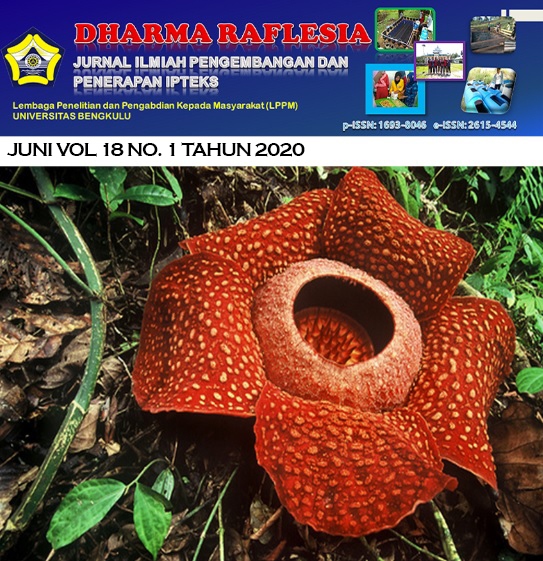Main Article Content
Abstract
Code of points, an artistic gymnastics competition assessment guideline set out in the gymnastics competition's rule book that governs the regulation of the assessor's tasks, stages, and levels of gymnast's age and its characteristics both junior and senior. The purpose of the code of point is, 1) that the junior gymnast can develop up to the peak of achievement at the senior level, 2) so that the gymnast can perform safely and avoid injuries that interfere with the physical development of the gymnast, 3) so that the assessment can be carried out with the same guidelines and not to be misunderstood. The target audience of community service are PJOK teachers both who work in the elementary, junior high school education units and as gymnastic trainers. The results of the activity show that the teachers and trainers have mastered the code of point assessment in gymnastic learning, so that the teacher is able to 1) solve the problem by examining the series of gymnastic movements at Olimpiade Olahraga Siswa Nasional(O2SN) branch exercises, 2) mastering the sign of body parts if there are mistakes in making the movement so that the value is reduced; 3) understand the level of small, medium and large errors, specifically about bending angle errors of less than 150, bending angles between 150 to 300, and bending with angles of more than 300. 4) assessing aesthetic elements in carrying out movements, including flexibility of motion, structuring the movements in shaping synchronization (specifically for female gymnasts to harmonize with accompaniment music), order and structure of movements. 5) able to assess movements that contain special requirements (requirment) in the artistic gymnastics of the floor such as there must be an acrobatic element, a gymnastic element, the press balance element persists for a certain time.
Article Details
- Authors retain copyright and grant the journal right of first publication with the work simultaneously licensed under a Creative Commons Attribution-ShareAlike 4.0 (CC BY-SA) that allows others to share the work with an acknowledgement of the work's authorship and initial publication in this journal.
- Authors are able to enter into separate, additional contractual arrangements for the non-exclusive distribution of the journal's published version of the work (e.g., post it to an institutional repository or publish it in a book), with an acknowledgement of its initial publication in this journal.
- Authors are permitted and encouraged to post their work online (e.g., in institutional repositories or on their website) prior to and during the submission process, as it can lead to productive exchanges, as well as earlier and greater citation of published work (See The Effect of Open Access).
- This work is licensed under a Creative Commons Attribution-ShareAlike 4.0 International License.
References
- Federation Internationale Gymnastique (FIG), (2017), Code of Point, Edition 01.2013-2016, France, – Printed FIG
- Hidayat,Imam,(1996), Senam,Diktat.,Bandung, FPOK IKIP Bandung.
- Mahendra,Agus, Pendekatan Pembinaan Pola Gerak Dominan , Pembelajaran Senam di Sekolah Dasar. Tersedia pada (http://www.diecoach.com/69.html), diakses pada tanggal 2 Juni 2019.
- Mustika Fitri, (2009), Penyusunan dan Pengembangan sistem Informasi data hasil pemanduan Bakat cabang olahraga senam, asisten deputi, Iptek Olahraga, Kemenpora: Jakarta
- PB. Persani, (2013), Manual Penilaian dan Kejuaraan senam Artistik, Teks Panduan, PB.Persani, Jakarta
- Sahara, Suyati ,(1999), Senam Dasar & Teknik Bantuan ,Universitas Terbuka, Jakarta.
- Sahara, Suyati, (2008), Senam Dasar ,UniversitasTerbuka , Jakarta.
- Schembri,G.,(1983), Introductory Gymnastics, Mayfield Publishing Company.
- Winarni, (2009), Code of point pedoman penilaian senam, UNY Publishing, Yogjakarta.
- Yensy, N. A. (2019). SOSIALISASI ACTIVE LEARNING MATEMATIKA MELALUI PERMAINAN KARTU BAGI GURU-GURU SD N 69 KOTA BENGKULU. Dharma Raflesia: Jurnal Ilmiah Pengembangan dan Penerapan IPTEKS, 17(1).
References
Federation Internationale Gymnastique (FIG), (2017), Code of Point, Edition 01.2013-2016, France, – Printed FIG
Hidayat,Imam,(1996), Senam,Diktat.,Bandung, FPOK IKIP Bandung.
Mahendra,Agus, Pendekatan Pembinaan Pola Gerak Dominan , Pembelajaran Senam di Sekolah Dasar. Tersedia pada (http://www.diecoach.com/69.html), diakses pada tanggal 2 Juni 2019.
Mustika Fitri, (2009), Penyusunan dan Pengembangan sistem Informasi data hasil pemanduan Bakat cabang olahraga senam, asisten deputi, Iptek Olahraga, Kemenpora: Jakarta
PB. Persani, (2013), Manual Penilaian dan Kejuaraan senam Artistik, Teks Panduan, PB.Persani, Jakarta
Sahara, Suyati ,(1999), Senam Dasar & Teknik Bantuan ,Universitas Terbuka, Jakarta.
Sahara, Suyati, (2008), Senam Dasar ,UniversitasTerbuka , Jakarta.
Schembri,G.,(1983), Introductory Gymnastics, Mayfield Publishing Company.
Winarni, (2009), Code of point pedoman penilaian senam, UNY Publishing, Yogjakarta.
Yensy, N. A. (2019). SOSIALISASI ACTIVE LEARNING MATEMATIKA MELALUI PERMAINAN KARTU BAGI GURU-GURU SD N 69 KOTA BENGKULU. Dharma Raflesia: Jurnal Ilmiah Pengembangan dan Penerapan IPTEKS, 17(1).
